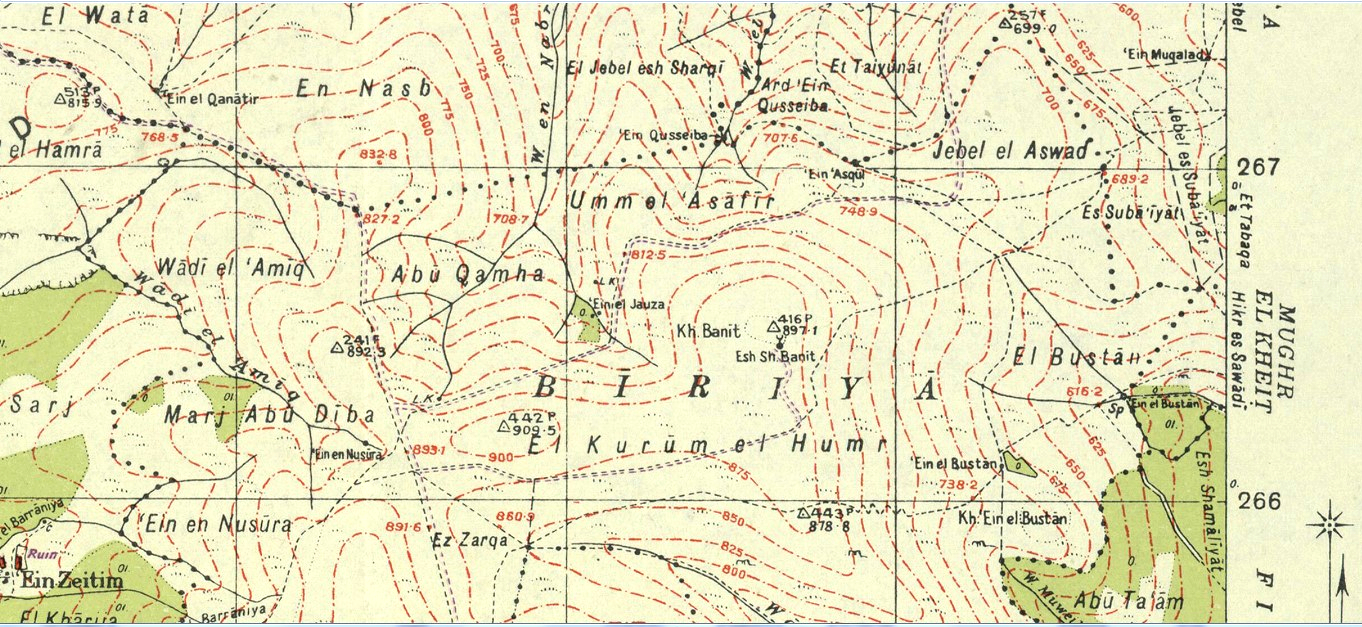|
Rav Chisda
Rav Ḥisda ( he, רב חסדא) was a Jewish Talmudist who lived in Kafri, Asoristan in Lower Mesopotamia near what is now the city of Najaf, Iraq. He was an amora of the third generation (died c. 320 CE at the age of ninety-twoMoed Kattan 28a), and is mentioned frequently in the Talmud. Biography Rav Ḥisda descended from a priestly family. He studied under Abba Arikha "the Rav", who was his principal teacher and after the latter's death he attended the lectures of Rav Huna, a companion of the same age. The pair were called "the Hasidim of Babylon". Rav Ḥisda was also among those called tzadikim, those who could bring down rain by their prayers. At first, he was so poor that he abstained from vegetables because they increased his appetite, and when he walked in thorny places he raised his garments, saying: "The breaches in my legs will heal of themselves but the breaches in my garments will not". At the age of sixteen he married the daughter of Hanan bar Rava and together ... [...More Info...] [...Related Items...] OR: [Wikipedia] [Google] [Baidu] |
Talmud
The Talmud (; he, , Talmūḏ) is the central text of Rabbinic Judaism and the primary source of Jewish religious law (''halakha'') and Jewish theology. Until the advent of modernity, in nearly all Jewish communities, the Talmud was the centerpiece of Jewish cultural life and was foundational to "all Jewish thought and aspirations", serving also as "the guide for the daily life" of Jews. The term ''Talmud'' normally refers to the collection of writings named specifically the Babylonian Talmud (), although there is also an earlier collection known as the Jerusalem Talmud (). It may also traditionally be called (), a Hebrew abbreviation of , or the "six orders" of the Mishnah. The Talmud has two components: the Mishnah (, 200 CE), a written compendium of the Oral Torah; and the Gemara (, 500 CE), an elucidation of the Mishnah and related Tannaitic writings that often ventures onto other subjects and expounds broadly on the Hebrew Bible. The term "Talmud" may refer to eith ... [...More Info...] [...Related Items...] OR: [Wikipedia] [Google] [Baidu] |
Rabbah Bar Rav Huna
Rabbah bar Rav Huna was a Jewish Talmudist who lived in Babylonia, known as an amora of the third generation (died 322). He was the son of Rav Huna, the head of the Academy of Sura. In the Talmudic Academy He was a man of true pietyShabbat 31a,b and genuine modesty, and was urged by his father to attend Rav Chisda's lectures diligently and to profit by his acumen. At first, however, Rabbah held aloof because matters were discussed which did not appeal to his earnest nature. But later he became closely associated with Rav Chisda, and was appointed judge under him; subsequently the two discussed aggadic subjects together. After the death of Rav Chisda, Rabbah became the head of the Academy of Sura, though he apparently held this position without the approval of the exilarch. His general relations with the exilarchate were by no means friendly, and he declared himself independent of its authority. Teachings A number of his halakhic ''Halakha'' (; he, הֲלָכָה, ), ... [...More Info...] [...Related Items...] OR: [Wikipedia] [Google] [Baidu] |
Jamnith
Jamnith ( gr, Ἰαμνειθ), also Jabnith, Yavnit (), Iamnia, or in medieval parlance, Ibnit / Abnit / Ovnit, is a ruin in the Upper Galilee that came to renown during the First Jewish Revolt in the 1st-century CE. The ruin, known locally by the name ''Khurbet esh-Sheikh Banit'', or simply ''Kh. Banît'', lies about to the northeast of Safed, in the Biriya Forest, and was once a fortified town towards the northeast of Mount Canaan (Hebrew: ''Har Kena'an''), upon a hill called ''Har Yavnit''. The hill on which the village ruins lie rises above sea level and overlooks the Hula valley. Access to the ruin is now restricted because of an enclosed military installation built over the site. The village is mentioned twice in the writings of Josephus as being in the Upper Galilee; once in ''The Jewish War'' (2.20.6) under the appellation Ἰαμνειθ, and again in ''Vita'' §37 under the name Ίαμνια, and is distinguished from the Jamnia of Judaea. Josephus testifies of himse ... [...More Info...] [...Related Items...] OR: [Wikipedia] [Google] [Baidu] |
Death (personification)
Death is frequently imagined as a personified force. In some mythologies, a character known as the Grim Reaper (usually depicted as a berobed skeleton wielding a scythe) causes the victim's death by coming to collect that person's soul. Other beliefs hold that the Spectre of Death is only a psychopomp, serving to sever the last ties between the soul and the body, and to guide the deceased to the afterlife, without having any control over when or how the victim dies. Death is most often personified in male form, although in certain cultures Death is perceived as female (for instance, Marzanna in Slavic mythology, or Santa Muerte in Mexico). By region Americas Latin America As is the case in many Romance languages (including French, Portuguese, Italian, and Romanian), the Spanish word for death, ''muerte,'' is a feminine noun. As such, it is common in Spanish-speaking cultures to personify death as a female figure. In Aztec mythology, Mictecacihuatl is the "Queen of Mictl ... [...More Info...] [...Related Items...] OR: [Wikipedia] [Google] [Baidu] |

